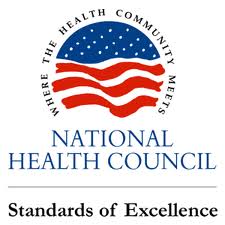Dysautonomia in Sjögren's
Advocacy, Diagnosis, General Information, Symptoms, Treatment —
Dysautonomia in Sjögren's
October is Dysautonomia Awareness month, and to honor the month, we are highlighting Sjögren’s and Dysautonomia. Sjögren’s is the second leading cause of dysautonomia behind diabetes. Our experts state that approximately 50% of patients with Sjögren’s present with some form of dysautonomia,1,2,3 the vast majority of Sjögren’s patients are underdiagnosed with dysautonomia.3
What is dysautonomia?
Dysautonomia, which doctors may also call autonomic dysfunction, occurs when there is an underlying malfunction of the autonomic nervous system (ANS). The ANS is made up of both the sympathetic (“fight or flight” response) and the parasympathetic (“rest or digest” response) nervous systems and controlled by the autonomic nerves and ganglia. A malfunction in the ANS can be caused by physical damage to the autonomic nerves or ganglia- called autonomic neuropathy- and/or by an imbalance of neurotransmitter responses, which can lead to impaired ANS signaling. Autonomic nerves and ganglia relay messages from the brain to the internal organs and tissues, including but not limited to the heart, blood vessels, gastrointestinal system, lungs, pupils, sweat glands, and bladder.2,3
The ANS is responsible for maintaining balance of the involuntary body functions such as heart rate, blood pressure, breathing, temperature regulation, and kidney function among others. Interestingly, the ANS highly regulates the function of the exocrine glands- the primary affected organ system in Sjögren’s.2
Dysautonomia can range in disease severity. Mild symptoms include dizziness and syncope (fainting), whereas moderate and more severe symptoms can include numbness and pain in the arms and legs, Guillain-Barre syndrome that can cause muscle weakness and paralysis, or full autonomic failure. The most common symptoms experienced by patients with dysautonomia are pain and fatigue.
How does dysautonomia manifest in Sjögren’s?
Sjögren’s is a heterogeneous disease and patients can have different clinical manifestations present before Sjögren’s diagnosis and as their main symptoms. For many Sjögren’s patients, especially younger patients, neurological manifestations like dysautonomia could be their initial presentation. The ANS is more vulnerable in Sjögren’s patients and autonomic dysfunction is more prevalent in Sjögren’s than any other autoimmune disease.3
In Sjögren’s patients, impairment of the ANS can cause dysregulation of one or more of the following:
- heart rate and blood pressure with or without syncope (fainting)
- esophagus and intestinal motility (muscle movement)
- bladder function, increased urination frequency
- dilation and constriction of the pupils of the eyes
- secretory glands including decreased lacrimation, salivation, and mucus production
- sweating, increased or decreased and heat intolerance
- respiration (breathing in and/or out)
Common forms of dysautonomia in Sjögren’s patients
Orthostatic Intolerance, including Postural Orthostatic Tachycardia Syndrome (POTS) and Orthostatic hypotension (low blood pressure when standing upright)
- Postural (standing upright) lightheadedness
- Postural heart racing, chest pain
- Presyncope or syncope (fainting)
- Postural dizziness
- Postural leg weakness
- Exercise Intolerance
- Postural visual symptoms
Gastrointestinal dysmotility (impairment of muscle movement in the esophagus, colon, intestines, stomach)
- impaired swallowing
- nausea
- vomiting
- early satiety
- constipation
- abdominal pain
- diarrhea
- gastroparesis (delayed stomach emptying)
Autonomic neuropathy
- Impairment and damage to the autonomic nerves and/or ganglia
- Patients can also experience POTS, orthostatic hypotension, and gastrointestinal impairment
How is dysautonomia diagnosed?
Sjögren’s patients do not necessarily have to see an autonomic neurologist to be diagnosed with dysautonomia or orthostatic intolerance. A primary care provider can measure vital signs after postural changes to determine if there is dysregulation in heart rate or blood pressure. Tilt table testing can be done for more formal autonomic dysfunction testing. However, a neuromuscular specialist will need to be seen to diagnose autonomic neuropathy and assess the extent of damage to the autonomic nerves. Other types of neuropathies such as small fiber neuropathy, which affects the small sensory neurons, can also cause autonomic dysfunction.
Diagnostic criteria3 for POTS and orthostatic hypotension from postural and/or tilt table testing:
Postural Orthostatic Tachycardia Syndrome (POTS)
- Increased Heart rate greater than or equal to 30 bpm with standing/tilt in adults and 40 bpm in children and adolescents
- Heart rate greater than or equal to 120 bp with standing/tilt, absence of hypotension
- Absence of conditions associated with orthostatic hypotension postural symptoms
Orthostatic hypotension (low blood pressure after standing upright)
- Sustained decrease in blood pressure within 3 mins of standing/tilt usually greater than 20 mmHg systolic BP or greater than 10 mmHg diastolic BP
- Vasovagal syncope (fainting due to a vagus nerve response)
- Transient loss of consciousness due to decrease in blood pressure and often including decreased heart rate
What causes dysautonomia in Sjögren’s?
The short and unappealing answer is that no one knows for certain. A definitive cause for dysautonomia in Sjögren’s may not have been elucidated, but it is widely supported that immune-mediated responses may damage autonomic nerves and ganglia as well as block important autonomic signaling through the muscarinic receptors.2 Many studies have shown anti-muscarinic autoantibodies, which block autonomic signaling, in the saliva, serum, gastrointestinal tract, and other tissues associated with autonomic dysfunction in patients with Sjögren’s.4,5,6,7 Cholinergic dysfunction, which can be caused by impaired muscarinic receptor signaling, is considered a hallmark of dysautonomia in patients with Sjögren’s.4,5,6,7
How is dysautonomia treated in patients with Sjögren’s?
Since the underlying causes of both dysautonomia and Sjögren’s have not been elucidated, the primary course of therapy is symptomatic treatment and stabilization of the ANS. Although symptoms of dysautonomia are common in patients with Sjögren’s, the severity and clinical manifestations vary among patients. Patients should speak with their doctors for a personalized plan to treat their dysautonomia.
Some lifestyle changes can be used to treat orthostatic intolerance, such as wearing compression stockings/socks or an abdominal binder, controlling salt and fluid intake, and exercises. Pharmacological treatments can be used to stabilize the autonomic nervous system using blood vessel constriction or dilation to control blood pressure or low-dose beta blockers to control heart rate as well as blood pressure. Antihistamines can also be used to help stabilize heart rate and blood pressure.3
Autonomic nerves have the ability to regenerate, which gives optimism that immunomodulatory drugs may be beneficial in restoring nerve function in patients with autonomic neuropathy as seen in patients with Guillain-Barre Syndrome that are treated with immunoglobulin. Common immunomodulatory drugs used for treating general dysautonomia and autonomic neuropathy in Sjogren’s patients are hydroxychloroquine, rituximab, low-dose naltrexone, and immunoglobulin.3,8,9
Editor’s note: Please be aware that clinicians may use medical terms synonymously. For example, a clinician may use autonomic neuropathy to encompass both general symptoms of dysautonomia and autonomic nerve damage or clinicians may use autonomic neuropathy for each separate condition.
The Sjögren’s Foundation and dysautonomia research in Sjögren’s patients
Earlier this year, the Foundation committed to expanding research for dysautonomia in Sjögren’s patients. The Foundation awarded Kamal Chémali, MD, an associate professor of neurology at University Hospitals Cleveland Medical Center, with a $50,000 grant to study the prevalence of elevated Mycoplasma pneumoniæ titers in Sjögren’s and other autoimmune disorder-associated neuropathic postural orthostatic tachycardia syndrome (neuropathic POTS). Dr. Chémali has focused his research and career on autonomic nervous system disorders, small fiber neuropathies (SFN) and autoimmune autonomic neuropathies.
A synopsis of what Dr. Chémali will study and hopes to achieve is shared below in an abstract of his proposal:
Sjögren’s is notorious for causing SFN, which is present in a majority of POTS cases (the combination is termed “neuropathic POTS”). Mycoplasma pneumoniae (MP) causes up to 40% of community acquired pneumonias and is a possible cause of immune-mediated large-fiber neurologic disorders, such as Guillain-Barré syndrome. Its effect of small fibers is less known. We found significant elevation of MP IgG titers in the serum of most individuals with neuropathic POTS associated with autoimmune disorders, predominantly Sjögren’s, departing significantly from the general population prevalence. We propose the pathogen may therefore contribute to autonomic C and A delta nerve fibers dysfunction, leading to autonomic disorder through an autoimmune mechanism. Such a conclusion would trigger the search for an autoimmune disease, mainly Sjögren’s, in patients with neuropathic POTS and elevated MP titers, leading to a more targeted and effective core treatment of these conditions with immune modulation.
If you have any questions about your medical condition, please seek additional advice from your healthcare provider.
References:
- Wallace DJ. The Sjögren’s Book. 5th ed. Oxford University Press, 2022.
- Davies K, Ng WF. Autonomic Nervous System Dysfunction in Primary Sjögren's Syndrome. Front Immunol. 2021;12:702505. Published 2021 Jul 26. doi:10.3389/fimmu.2021.702505
- Goodman, BP. Out of balance, Autonomic Dysfunction in Sjögren’s. Oral presentation presented at: The Sjögren’s Foundation National Patience Conference, 2023.
- Mandl T, Granberg V, Apelqvist J, Wollmer P, Manthorpe R, Jacobsson LT. Autonomic nervous symptoms in primary Sjogren's syndrome. Rheumatology (Oxford). 2008;47(6):914-919. doi:10.1093/rheumatology/ken107
- Reina S, Sterin-Borda L, Passafaro D, Borda E. Anti-M(3) muscarinic cholinergic autoantibodies from patients with primary Sjögren's syndrome trigger production of matrix metalloproteinase-3 (MMP-3) and prostaglandin E(2) (PGE(2)) from the submandibular glands. Arch Oral Biol. 2011;56(5):413-420. doi:10.1016/j.archoralbio.2010.08.017
- Imrich R, Alevizos I, Bebris L, et al. Predominant Glandular Cholinergic Dysautonomia in Patients with Primary Sjögren's Syndrome. Arthritis Rheumatol. 2015;67(5):1345-1352. doi:10.1002/art.39044
- Mukaino A, Nakane S, Higuchi O, et al. Insights from the ganglionic acetylcholine receptor autoantibodies in patients with Sjögren's syndrome. Mod Rheumatol. 2016;26(5):708-715. doi:10.3109/14397595.2016.1147404
- Rist S, Sellam J, Hachulla E, et al. Experience of intravenous immunoglobulin therapy in neuropathy associated with primary Sjögren's syndrome: a national multicentric retrospective study. Arthritis Care Res (Hoboken). 2011;63(9):1339-1344. doi:10.1002/acr.20495
- Chaaban N, Shaver T, Kshatriya S. Sjogren Syndrome-Associated Autonomic Neuropathy. Cureus. 2022;14(6):e25563. Published 2022 Jun 1. doi:10.7759/cureus.25563


